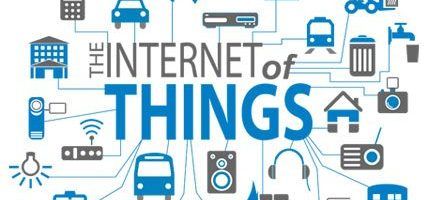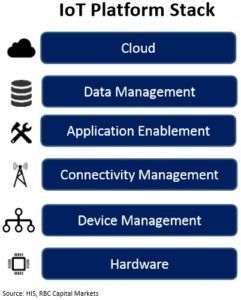Cisco and IoT, from hype to reality

Cisco acquires Jasper Technologies for $1.4 billion in order to complete its IoT offering.
Internet of Things (IoT) is a network of devices, vehicles, buildings, and other objects equipped with software and sensors to enable them to interact and gather data on environment. The data collected is transmitted over the internet and analyzed to improve processes. The IoT industry is expected to grow at more than 20% over the next several years as more organizations see the benefits of sensory data to reduce costs and realize operating efficiencies. Examples of application of IoT include fitness wearables (distance, calories trackers), medical remote monitoring (blood pressure, glucose, heart rate trackers), entertainment (smart TVs, set-top boxes, wireless speakers), home automation (consumer robots, connected kitchen appliances), home security (sensors, cameras), home energy management (light bulbs, thermostats), smart energy (smart grid, smart meters), connected vehicles, factory automation, among many others.
The accelerated adoption of IoT in recent years has been driven by several key trends such as lower cost & size of hardware, higher proliferation of smartphones, better data storage & analytics, and increased use of cloud computing. The IoT is composed of six layers; at one end is the hardware, which refers to chips and sensors used to make IoT devices. On the other end is the cloud, which stores the data coming from the IoT devices. The layers in-between support communication across the two ends and include device management (manages IoT devices remotely for functions such as reboot, reset or update), connectivity management (monitors connectivity paths between devices and servers), application enablement (links IoT devices to applications) and data management (analyzes data at the edge of the network). Security is also critical to the IoT ecosystem and therefore is present in each layer.
Multiple companies cover different layers of the IoT stack and Cisco is one of the companies clearly positioned to benefit from the rise of IoT. Cisco traditionally has operated in the networking & hardware segment, and recently has been developing software for its IoT services. The company provides IoT products on a number of fronts and across many industry verticals:
- Network: Cisco’s 1000-5000 switches, ASR routers and Aeronet access points support IoT applications.
- Applications: Cisco’s Fog performs real time control functions such as asset management, energy monitoring and smart parking.
- Security: Cisco’s FirePower firewall appliances for network security, IP cameras for physical security and malware protection for software security.
- Analytics: Cisco’s CSA analyzes incoming sensor data to make decisions.
- Automation: Cisco’s Field Director for network management.
However, although Cisco is a leader in most of the IoT stack, the Company needs to strengthen its position in the cellular wireless space and as a consequence in March 2016 completed the acquisition of Jasper Technologies, one of the largest IoT cloud-based software platforms, for $1.4 billion. Prior to Jasper’s acquisition, Cisco’s IoT focus was mainly in connectivity for non-cellular wireless, fixed assets and data connectivity analytics within the IoT stack, but was weak in terms of connectivity for its customers. Now with Jasper, Cisco completely covers the IoT stack which enables the Company to support cellular management and grow in the software & services space, the missing pieces in Cisco’s IoT strategy.
Jasper serves 3,500 enterprise customers through more than 25 service partners in 100 countries. Jasper helps customer manage and monetize IoT services in a single platform. According to Jasper the real value of IoT is not in the devices themselves but in the services that they enable and the sources of revenue that those services generate. Jasper helps businesses bring IoT solutions to customers faster with a readily usable and scalable platform. It enables businesses with the ability to have real-time visibility and to monitor the status of their devices from any place and at any time.
Word count: 613 words
Sources:
http://investor.cisco.com/investor-relations/overview/default.aspx
http://www.slideshare.net/Cisco/enabling-the-internet-of-everything-ciscos-iot-architecture
Internet of Things… Big Brother is Here. RBC Capital Markets. August 2016. Amit Daryanani, CFA




Dear Andres,
It was very interesting to read your comment. Cisco’s new Internet of Things-friendly system is apparently inter-related software that will help corporations and cities set up the necessary infrastructure such as cameras and routers. This initiative started from John chambers for a long time and still going on. This IoT aims to manage the data flowing between inter-connected equipment. Interesting blog! Thank you.
Andres – I’m glad that you wrote about Cisco. I think we’d be remiss to talk about new, upcoming opportunities created by digitization without including them. I’m curious – what do you think about the Jasper acquisition? (Particularly the price tag) Was it a good move for Cisco?
I was fortunate to visit the Jasper folks at Mobile World Congress back in February. It struck me, however, that there are a number of companies working on remote/mobile device management systems (for things such as remote updates and resets). There is also an interesting trend towards “soft SIM”/”eSIM” technology, which could allow cellular M2M/IoT products to move between service providers more fluidly. That technology seems to live with whomever is playing the mobile (virtual) network operator role in the value chain, for now. I’d love to learn more about how companies are charging for those technologies, too. Are they going to be good businesses? Or table-stakes enablers?
By contrast, Jasper really stuck out to me as playing a unique role in the “monetization” step in the value chain — kind of like an Amdocs-for-IoT. They seem to be well integrated with the likes of AT&T, Telefonica, NTT DoCoMo, and China Unicom (among many others!). Whereas Amdocs is an incumbent for billing/charging/monitoring, etc. among consumer cell phone plans that cost greater than $60 per month, Jasper really plays a similar role for IoT plans (which may cost a fraction of that price). That seems to be a really valuable place to play! But I wonder how Cisco might leverage Jasper’s expertise going forward. Hopefully this will be a really, really big market — so perhaps it could still change significantly!
Great article Andres! I’m wondering if the true value in the IoT business is the hardware or the software. It seems like companies already have a lot of data they don’t use. I’m not sure that providing additional sensors or hardware to gather more data will be as relevant as providing software to actually use this data. I’d be curious to know in which direction (hardware vs. software) Jasper is heading.
Great stuff Andres. Cisco seems to be one of those companies that people have written off in recent years with the advent of cloud, mobile etc., but their leadership in the IoT stack is encouraging. From a security perspective, they are one of the only players offering services that are somewhat in line with the risks in the IoT environment.
That said, by nature of what they do, Jasper has the potential to be a cyber-security nightmare for Cisco. The immense interconnectivity that Jasper offers certainly creates lucrative opportunities for monetizing and integrating a company’s assets. It also essentially creates a centralized cyber vault that if breached, could result in devastating amounts of data being compromised (or worse devices being hi-jacked). I wonder how Cisco is thinking about mitigating these risks, how they are communicating these risks with the wireless carriers, and who else they are partnering with to protect Jasper’s data.